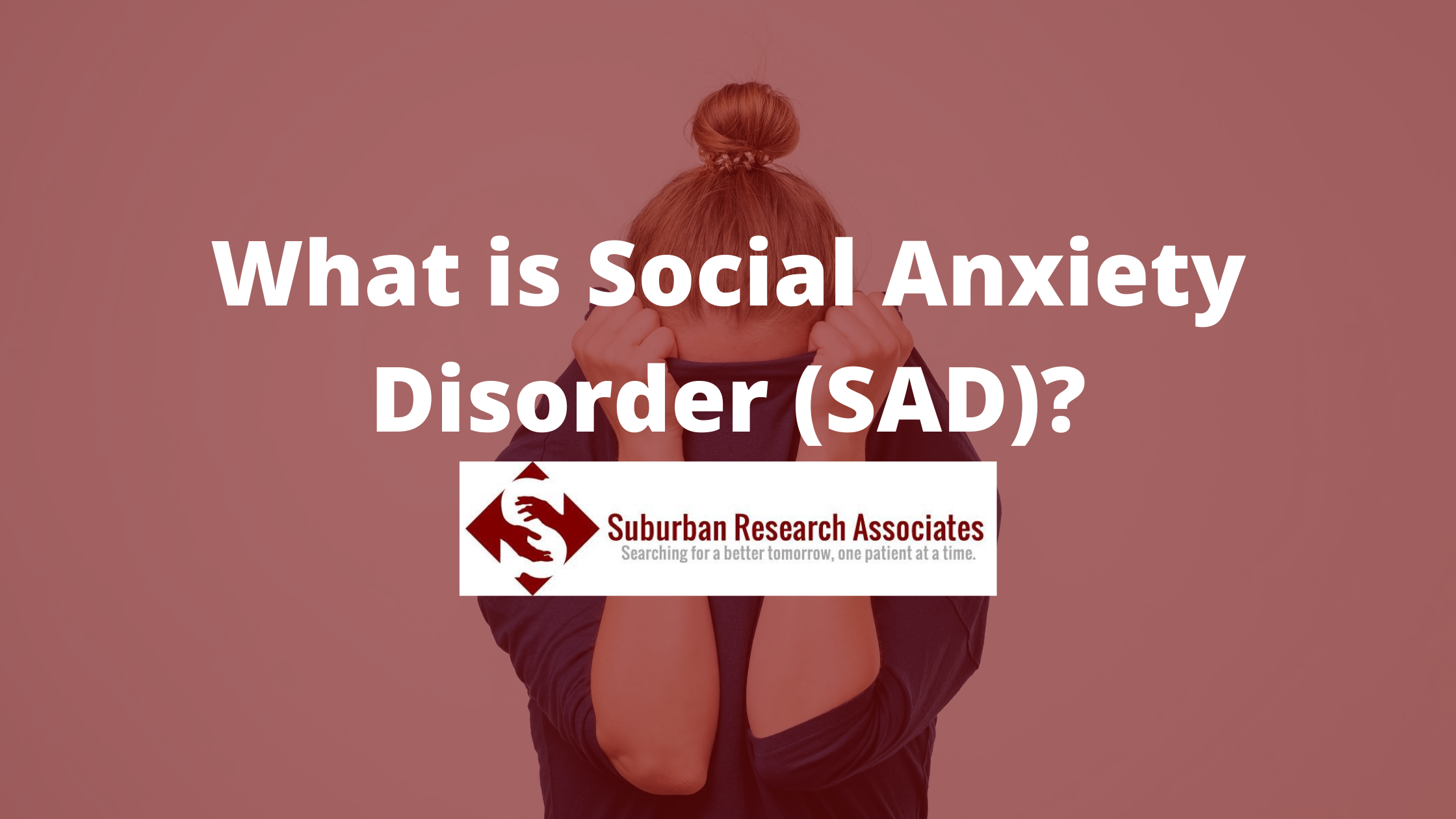As we have recently begun enrolling for our new social anxiety disorder study, we thought we would share a little more about what SAD actually is.
When people hear the term social anxiety disorder or SAD, they may think of someone who is just extremely shy or has a strong dislike for public speaking. However, it’s much more than that alone. While these are some characteristics of SAD, there are many more factors at play. Particularly, SAD consists of overwhelming and intense fear and anxiety that often takes over a person’s mind leading them to feel like they have no control over them.
Those with SAD often want to socialize, but have an overwhelming fear of doing so which leads them to avoiding social situations, interacting with others, going out in public, public speaking, etc. Those with SAD may have different fears around socializing but they all fall under a similar umbrella. Put simply, SAD often comes with intense fears of being judged, people looking at them, fear of saying or doing the “wrong” things, and fears of embarrassing or humiliating themselves or others. These fears often create overbearing amounts of anxiety leading one to avoid situations of socialization or interacting with others. That is why SAD is different than simply being shy or introverted, it is often out of the person’s control and the fears and anxiety are what control them. It is also not something that can be treated solely by “facing the fear”. While that may be part of the treatment plan, that alone often cannot break the fear and can worsen one’s symptoms without the support and guidance of a treatment plan.
In addition, SAD, as with most anxiety disorders, can often come with physical symptoms as well including fast heart rate, sweaty palms, dizziness and lightheadedness, and trembling, especially when exposed to a social environment that may trigger the fear and anxiety.
If you are struggling with SAD, you are not alone. We know it can be difficult to navigate and cope with these overwhelming feelings. That is why we are participating in clinical trials for SAD, to provide hope for future treatment options! More information about our study can be found here.
If someone you know is struggling with SAD, it can be challenging to understand how to help them. The important thing to realize is that those with SAD are often hesitant to reach out for help as they may fear being a burden or feel ashamed. The best thing to do is not to push them, but to let them know that you are there.
We hope this article helped you understand the very basics of social anxiety disorder. If you found the information here helpful, be sure to share this post to spread awareness about SAD and eliminate the stigma surrounding it.
Additional Resources and Information:
Mayo Clinic: https://www.mayoclinic.org/diseases-conditions/social-anxiety-disorder/symptoms-causes/syc-20353561


